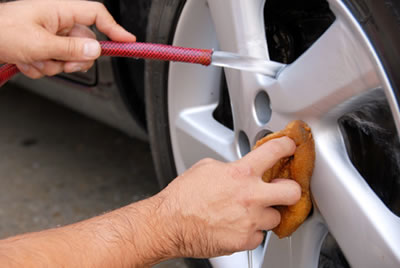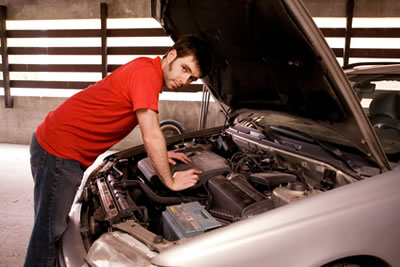
Many accidents are claimed to have happened due to something beyond the driver's control. However, most of them could be avoided by following some simple safety essentials that can keep you, your passengers and your motor vehicle safe with minimum cost and without advanced safety equipment.
Cars today are designed to be as safe as they are good looking or aerodynamic and in some cases it's even function over form. While all cars today feature advanced crash-test rated design and construction, the best safety technology and complex equipment on offer in the loaded higher variants come at a price which not everyone can afford. What then can you do to ensure maximum safety when you travel? Here are some of the best means to ensure the safety of not just you and your loved ones, but also your car!
The basic safety procedures you can ensure are quite simple really - always buckle up your seatbelt, stay alert, keep your eyes on the road and obey traffic lights and road signs. While that may seem like something everyone does, not everyone abides by those simple rules. Of course it's great if you do because then you can take a few more steps to decrease any risks that may surface which many consider 'beyond control'.
Tyre Care
Tyres are the only contact you car has with the road and these four rubber donuts are what keep you there. Make it a point to check the depth of the tread periodically and also ensure you check your tyre pressure regularly. A fault with any one tyre may lead to loss of grip or traction under panic braking or worse; complete loss of control.
Wheel Alignment
It is good practice to make sure your wheels are aligned properly. Any deviation from the optimum setting will become obvious over time with the vehicle veering to one side. Delays in getting it checked and corrected may cause further, more expensive damage to running components.
Brakes
Another good practice is consciously pumping the brake pedal every time you reverse out of your driveway or out of a parking spot; just to ensure they're working. It takes barely a few seconds but is one of the most significant checks you can perform.
Storage & Weight
Avoid keeping unnecessary objects in the car, especially inside the cabin on the dashboard or the back seat. If you have a punctured tyre in the boot, get it repaired. If there's any old junk, store it someplace else and not in the car. Extra weight and objects not only reduce your car's performance and fuel economy; they become unpredictable variables in the event of an impact.
Seat Belts
Seat belts are the most important primary safety measure in the event of a crash. Not only do they hold you in place but they also prevent any untoward body movement that may cause further complications. Most seat belts are equipped pre-tensioners as well as inertia reel and load limiters. While those may seem like complicated terms at first; there is one simple check to ensure they're working right - a quick couple of tugs on the belt should have it stop in its tracks. If it dispenses freely, you may need to get it checked. Another oversight is usually twisted belts. Always make sure your seatbelt isn't twisted and buckles in the correct position. Also check the belt material for any wear or damage every once in a while. Consult your vehicle dealer or service station for and repairs or replacements.
Child Seats
If you have young children and if they travel with you, chances are you use child seats. The first rule is never seat a child in the front passenger seat. As far as possible, have them seated in the rear. If you are using child seats, it is preferable to use side or rear facing child seats rather than front facing ones.
Airbags
The supplemental restraint system uses airbags in the front, and depending on the model and variant of car you drive, may also be equipped with side bags in the front seats and curtain airbags on the side. Airbags are the second preferred safety measure the onboard computer uses. Depending on the intensity and direction of the crash, it may choose to deploy some, or all of the airbags. Airbags are designed for one purpose alone, to prevent casualties, and so the aftermath is never pretty. They inflate with a force incomprehensible to many and, to some extent, may even hurt the person they end up protecting. The passenger airbag is usually equipped with a deactivation switch. If you have a young passenger up front who is not the average height, it would make sense to deactivate the airbag as its deployment may cause more harm than good; another reason for kids to be seated in the rear at all times.
Head Rests
Another aspect of the interior often overlooked is the availability of head rests on the front and rear seats. While most car manufacturers offer these as standard, adjustable or not; they are an important aspect to the safety aspect of the car, particularly towards whiplash prevention. Many basic models of most small cars are equipped with one piece backrests, without a separate headrest, if this is the case, sit as you would usually and check the ergonomics. If it's too low, it needs to be looked into.
Seats
Now on to the seats themselves; always have your seat positioned in a way that allows the best visibility while also having the maximum distance between you and the steering wheel. Of course, you should always have the steering wheel within range, preferable around your wrists with your arms extended ahead of you. Another bit to look out for is the cushioning. How supportive is it? Does it have you sliding around while going through corners? If these are concerns, have them upholstered in a better material. Also consider the cushion angle and that they adhere to and anti-submarine design to prevent you sliding off under hard braking.
Car manufacturers try their best to make their cars as safe as possible with the help of advanced intelligent design for the chassis, bodywork and overall layout. It is the user's responsibility to ensure that they pay attention where required so that if an unfortunate event does occur, the repercussions would be a lot less severe.



